
Your baby's appearance
Your baby's appearance
At birth your baby may not have looked exactly like you expected. Below is a description of some aspects of your newborn's appearance that change as your baby grows older. Be sure to ask your nurse or health care provider about anything that concerns you.
Face and head
- Molding. Your baby's skull isn't solid bone. This allows your baby's head to change shape or mold in order to fit through your pelvis. If your baby was born vaginally, their head may have looked more cone-shaped than round right after birth. It takes a few days for your baby's head to return to its regular shape.
- Fontanels (soft spots). There are two spaces on your baby's head where there isn't bone. These soft spots are called fontanels. A diamond-shaped space is at the top of your baby's head. A smaller, triangular-shaped space is at the back. The spaces allow for molding at birth and rapid brain growth during your baby's first year.
It will take 12 to 18 months for them to close. Until then, the spaces are protected by a tough membrane covering. - Puffy eyes. During birth, pressure on your baby's head and face can make your baby's eyes look puffy. This will go away in a day or so.
- Bruising. Your baby may be bruised if they were born quickly or if your doctor had to use forceps or a vacuum extractor to help deliver your baby. These bruises start to fade soon after birth but may take a few weeks to disappear.
Skin
- Vernix. This white cheesy coating covered your baby's skin before they were born. It started to disappear as your baby's due date approached. If you don't see any vernix, you may still find it in the folds of your baby's skin. Any vernix that remains after your baby's first bath can be gently rubbed into the skin.
- Lanugo. Your baby's back, shoulders, ears and cheeks may be covered with this fine, soft hair. It will fall out over the next several weeks.
- Milia. There may be white, pimple-like bumps across your baby's nose and cheeks. Don't pick at them or try to squeeze them. They will go away on their own.
- Mottling. Newborns have thin skin, making it easy to see blood vessels. As a result, your baby's skin changes color. At birth babies are grayish-blue until they start breathing. Then, they quickly become a normal color.
A newborn's hands and feet, however, may stay bluish for several minutes or more. Your baby's hands and feet will turn pale or blue when they are cold. When your baby cries, their face and body may get quite red. - Birthmarks.
- Many light-skinned babies have salmon-colored patches or red marks around the top of the nose, forehead, and eyelids, or at the back of the neck. These are often called stork bites. They may brighten in color when your baby cries. These will fade over the first year or two.
- Babies with darker skin may have blue to gray patches over the lower back and buttocks. These are called congenital dermal melanocytosis but are commonly known as Mongolian spots. They are not bruises. These fade and usually disappear completely within a few years.
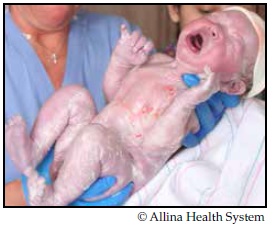
Vernix will be wiped off or rubbed into the skin.
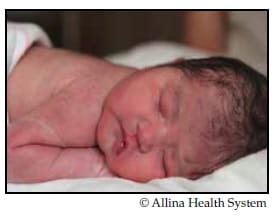
Lanugo is soft, fine hair that will fall out over the next several weeks.
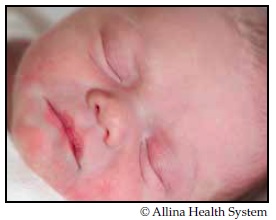
Milia are little white bumps that will go away on their own.
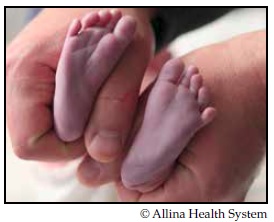
The feet will become a normal color.
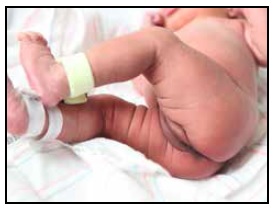
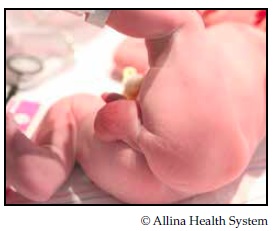
Swelling in the genital area will go away in a few days.
Breasts and genitals
Pregnancy hormones affect your baby. Your baby may have enlarged breasts, genital swelling or vaginal discharge of mucus or a little blood. These signs all disappear within a few days.
Source: Allina Health's Patient Education, Guide for the Care of Children: Ages Birth to 5, sixth edition, ped-ah-91554
Reviewed By: Allina Health's Patient Education Department experts
First Published: 02/01/2010
Last Reviewed: 06/12/2025

